Laser Cutting Machines
Welcome to Royell, your trusted partner for top-quality laser cutting machines. Whether you’re working with metal, wood, leather, glass, or sheet metal, our advanced CNC laser cutting machines are designed to meet all your cutting needs. From tube and pipe cutting to DIY projects, our machines offer precision and versatility for any application. Explore our range of laser cutting machines today and elevate your production with the best solutions for metal, wood, leather, glass, and beyond.
Laser Cutting Machine Categories
Whether you’re working with metals, non-metals, or specialized materials like tubes and pipes, our cutting-edge technology ensures precision, efficiency, and versatility. Explore our four main types of laser cutting machines—Fiber Laser, CO2 Laser, Mixed Laser, and Tube & Pipe Laser—to find the perfect solution for your specific applications. Each machine is designed to deliver exceptional performance, helping you achieve superior results in your production processes.
Fiber Laser Cutting Machine
Fiber laser cutting machines use highly efficient fiber lasers, offering excellent cutting speed and precision. They are ideal for cutting metal materials such as stainless steel, carbon steel, and aluminum alloys. Widely used in industries like automotive, aerospace, and sheet metal processing, these machines are known for their low maintenance costs and long service life, making them a top choice for metalworking.
CO2 Laser Cutting Machine
CO2 laser cutting machines utilize CO2 lasers and are primarily used for cutting non-metal materials like wood, leather, plastic, and glass, though they can also handle some metals. Their high precision and fine cutting capabilities make them perfect for industries such as advertising, packaging, and decoration, where detailed patterns and high-quality cuts are essential.
Mixed Laser Cutting Machine
Mixed laser cutting machines combine the strengths of fiber and CO2 lasers, allowing them to cut both metal and non-metal materials. This versatile equipment is ideal for businesses that need to handle a variety of materials, such as manufacturers and craft producers. With the ability to perform multiple cutting tasks, these machines improve production efficiency and reduce equipment costs.
Tube & Pipe Laser Cutting Machine
Tube and pipe laser cutting machines are specifically designed for cutting various shapes and sizes of tubes and pipes, making them ideal for industries like construction, furniture, and machinery manufacturing. They offer high precision cutting and support complex shape processing, meeting the demands of efficient production. This equipment is particularly suited for industrial applications requiring precise cuts and diverse designs.
Product Showcase
Fiber Laser Cutting Machines: Precision and Performance Redefined
Royell’s fiber optic laser cutting machines set the standard for cutting-edge precision and efficiency. These CNC fiber laser cutting machines are engineered to deliver exceptional results, making them the ideal choice for a wide range of metalworking applications. Whether you’re cutting stainless steel, carbon steel, or aluminum alloys, our fiber laser cutting machines for metal offer unmatched speed and accuracy, ensuring your projects are completed with the highest quality.
We understand that investment in technology is crucial, which is why we offer competitive fiber laser cutting machine costs that provide excellent value without compromising on performance. Explore our collection of best-selling models below and discover the perfect machine to elevate your production capabilities.

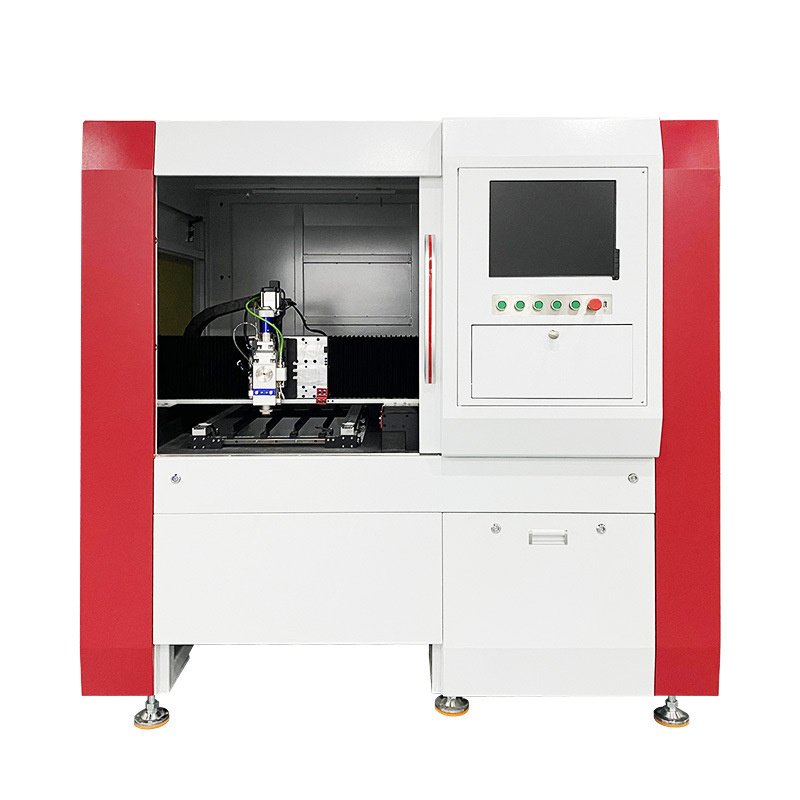







CO2 Laser Cutting Machines: The Ideal Choice for Versatile Cutting and Engraving
Royell’s CO2 laser cutting machines offer a highly versatile solution for all your cutting and engraving needs. Whether you require a CO2 laser 100W, 60W, or 80W machine, we provide options that cater to various power requirements, ensuring efficient cutting of different materials. For DIY projects or small workshops, we also offer CO2 laser 50W and K40 desktop models, perfect for compact spaces and personalized creative work.
Our CO2 laser CNC machines are not only ideal for non-metal materials but can also handle certain metal cutting tasks. Especially for CO2 laser cutting metal projects that require precise cuts, these machines excel in delivering top-notch results. Whether you’re engaged in large-scale production or small-batch processing, Royell’s desktop CO2 laser cutters provide outstanding performance and precision, enabling you to achieve even the most intricate designs and applications.












Mixed Laser Cutting Machines: The Best of Both Worlds for Metal and Non-Metal Cutting
Royell’s Mixed Laser Cutting Machines combine the strengths of both fiber and CO2 laser technologies, offering unparalleled versatility. These machines are perfect for businesses that need to handle a wide range of materials, from metal to non-metal. With the ability to switch between CO2 laser for non-metal materials like wood, leather, and acrylic, and fiber laser for metals, our mixed laser machines ensure that you have the right tool for any job.
Whether you’re working with thick metals, delicate fabrics, or need high-precision engraving on various materials, our mixed laser cutters provide the flexibility and efficiency your production demands. These machines are particularly beneficial for manufacturers looking to optimize their processes by combining the best features of both fiber laser and CO2 laser cutting machines. Experience seamless transitions between materials and achieve high-quality results with every cut.

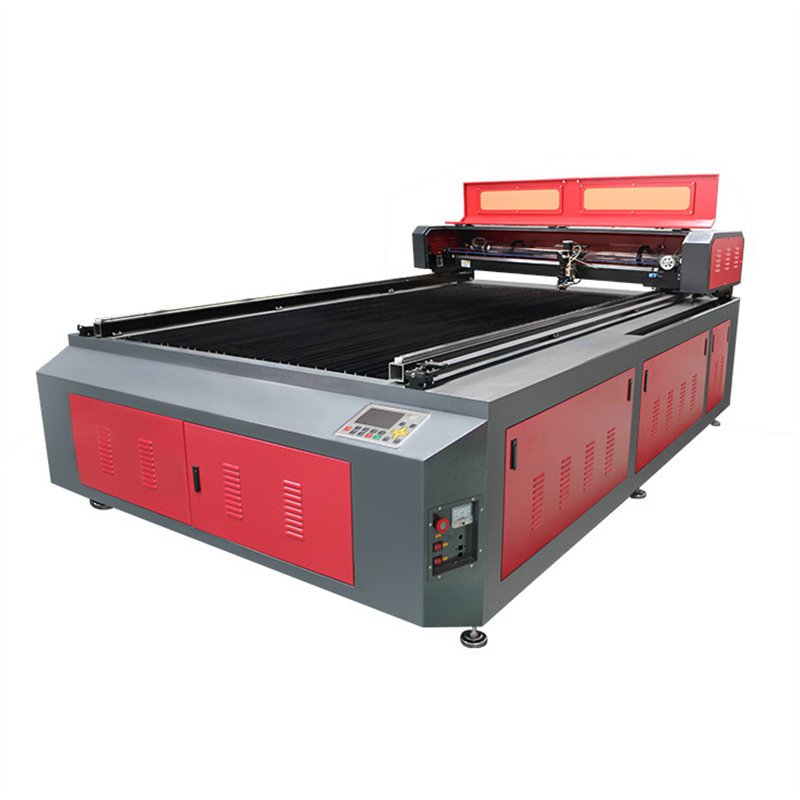

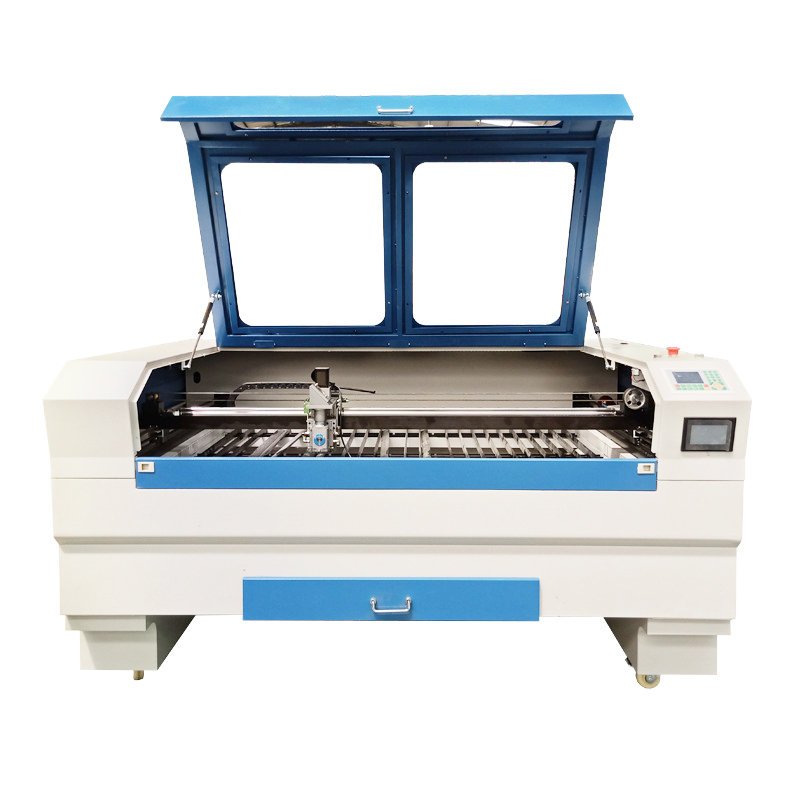

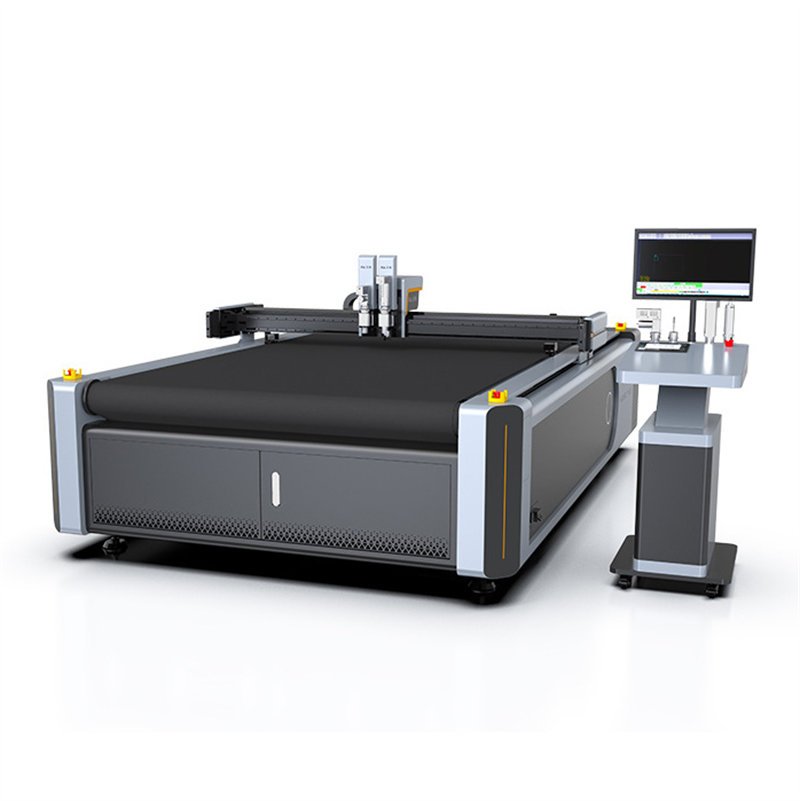



Tube & Pipe Laser Cutting Machines: Precision Cutting and Beveling Solutions
Royell’s Tube & Pipe Laser Cutting Machines are expertly designed for precise cutting and beveling of various pipe shapes and sizes, including round and square tubes. Our pipe cutting beveling machines deliver high-precision cuts and bevels, making them ideal for industries such as construction, manufacturing, and furniture production. Whether you need a laser cutting machine for pipe or a specialized square tube laser cutting machine, we offer the right equipment to meet your needs.
Our CNC tube laser cutting machines incorporate advanced technology and precise control systems to ensure that each cut meets the highest quality standards. These machines not only boost production efficiency but also excel in handling complex cutting tasks, particularly in tube and pipe processing. Choose Royell to experience superior tube cutting and beveling technology.







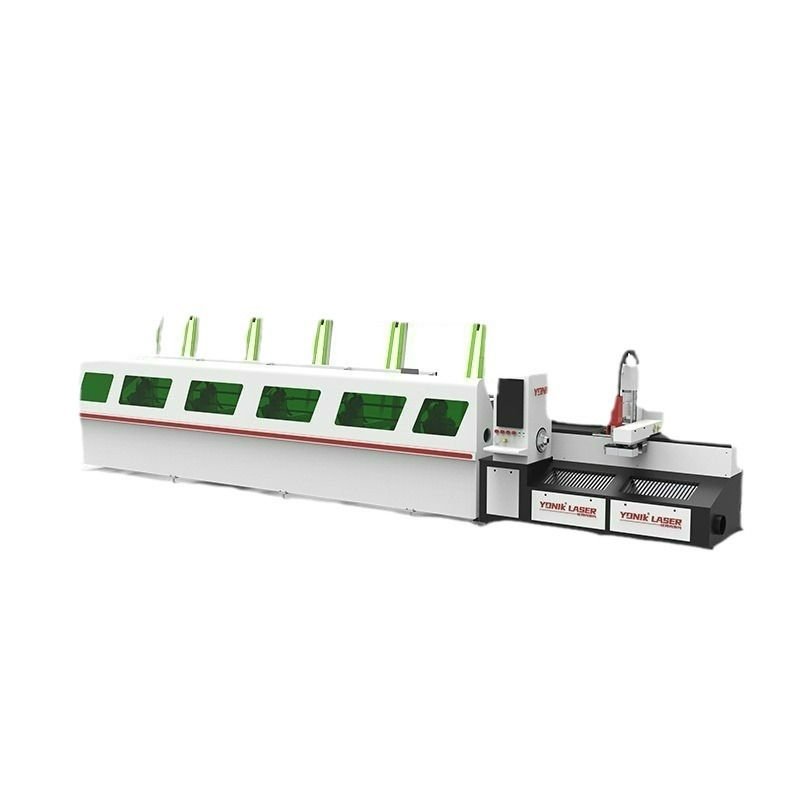

Still not finding what you're looking for? Contact our consultants for more available products.
Features of Our Laser Cutting Machines
Comprehensive Equipment Protection
Our laser cutting machines are designed with robust protection systems to ensure stable performance, even under demanding conditions. Whether you’re cutting metal, wood, leather, or creating intricate designs on paper or crafts, our machines maintain reliable, long-term support, keeping your production smooth and efficient.
Exceptional Durability
Built with top-quality materials, our CNC laser cutting machines are made to withstand high temperatures and mechanical stress. These machines deliver consistent performance, even with continuous use on tough materials like sheet metal and tube, ensuring durability that minimizes the need for frequent maintenance.
Broad Applications
Our versatile laser cutting machines handle various materials and applications. Whether you’re cutting metal, wood, leather, jewelry, or working on DIY projects at home, our machines provide precision and quality. From CNC operations to detailed craft projects, they are the perfect solution for industries ranging from automotive to home use.
Optimized Performance
Engineered for efficiency, our laser cutting machines excel in high-speed production and complex designs. Their advanced thermal and electrical insulation ensures precision when cutting sheet metal, leather, or delicate materials like paper. This optimized performance boosts production efficiency and ensures top-quality results.
Easy Installation and Maintenance
Our machines feature a user-friendly, modular design, making installation and maintenance quick and straightforward. Components are easy to replace, reducing downtime and ensuring uninterrupted production, whether you’re running large-scale operations or DIY projects.
Cost-Effective Solutions
We offer high-performance laser cutting machines at competitive prices. With our efficient production processes, you can enjoy the best return on investment without compromising on durability or precision, making our machines ideal for both industrial use and home-based projects like crafts and jewelry.
I.what is laser cutting machine?
A laser cutting machine is a device that uses a high-powered laser beam to precisely cut, engrave, or shape materials. The laser emits intense light that is focused into a narrow beam, which heats and melts the material at the point of contact, allowing for clean and accurate cuts. Laser cutting machines are widely used in industries such as manufacturing, automotive, aerospace, and electronics for cutting metals, plastics, wood, glass, and other materials.
There are different types of laser cutting machines, such as fiber laser, CO2 laser, and mixed laser machines, each suited for different materials and applications. For example, fiber lasers are excellent for cutting metals, while CO2 lasers are commonly used for non-metals like wood and acrylic.
The main advantages of laser cutting include high precision, speed, and the ability to create intricate designs with minimal material waste.
II.how much is a laser cutter machine?
Laser cutting machines vary widely in price depending on the type, power, size, and features. Below is a detailed breakdown of the different categories and pricing factors:
1. Entry-Level Laser Cutting Machines (For hobbyists and DIY projects)
- Price Range: $300 to $3,000
- Common Types: CO2 laser cutters (e.g., K40)
- Power: 40W to 60W
- Features: Entry-level laser cutters are compact and suitable for home workshops or personal DIY use. These machines are mainly used for cutting and engraving non-metal materials such as wood, leather, acrylic, and paper.
- Applications: Ideal for creating small crafts, personalized designs, paper or lightweight material cutting, often used in DIY laser cutting and home use projects.
Example:
- K40 CO2 Laser Cutter: 40W, suitable for small crafts and home use, priced around $400 to $800.
2. Mid-Range Laser Cutting Machines (For small businesses or professional workshops)
- Price Range: $5,000 to $15,000
- Common Types: CO2 laser cutters, CNC laser cutting machines
- Power: 60W to 150W
- Features: Mid-range machines are larger, more powerful, and capable of handling a wider range of materials and higher workloads. These machines can cut both non-metals and thin layers of metal, such as sheet metal, wood, leather, and glass.
- Applications: Commonly used in small-scale manufacturing, sign-making, crafts, and other industries that require more complex designs and versatile cutting capabilities.
Example:
- 60W CO2 Laser Machine: Suitable for cutting wood, acrylic, etc., priced around $6,000 to $10,000.
- CNC Laser Cutting Machine: For metal and non-metal cutting, priced between $10,000 and $15,000.
3. High-End Industrial Laser Cutting Machines (For large-scale production)
- Price Range: $20,000 to over $500,000
- Common Types: Fiber laser cutters, high-power CO2 laser cutters
- Power: 150W to 500W+
- Features: These machines offer extremely high cutting speed, precision, and power. They are capable of cutting thick metal materials such as stainless steel, carbon steel, and aluminum. Advanced automation features (e.g., automatic feeding, autofocus) are often included to maximize production efficiency, making them ideal for large-scale industrial production.
- Applications: Used in industries such as automotive manufacturing, aerospace, metal fabrication, and construction for cutting thick metals and processing large quantities of materials with high precision and speed.
Example:
- 500W Fiber Laser Cutter: Designed for high-efficiency metal cutting, priced around $100,000 to $300,000.
- 1500W CO2 Laser Cutter: Suitable for large-scale cutting tasks, priced over $300,000.
Factors Affecting Price:
Power: The higher the power, the thicker the materials that can be cut, and the faster the cutting speed. For example, 40W-60W is ideal for light materials, while machines with 100W or more are used for heavier materials and intensive applications.
Materials: Machines designed for metal cutting (such as fiber lasers) are generally more expensive than those for non-metal materials (such as CO2 lasers).
Cutting Area: Larger machines with bigger workspaces cost more. Small desktop laser cutters are cheaper, while large industrial machines are significantly more expensive.
Brand and Support: Well-known brands tend to be pricier, but they often come with better warranties and technical support. Machines from top manufacturers may also have additional features such as automation, smart control systems, etc.
Additional Features: Machines with advanced features like automated systems (e.g., auto-focus, auto-feed), CNC control, laser cutting speed charts, remote operation, and other smart functions typically cost more.
Buying Guide:
- Hobbyists or small business owners: Entry-level or mid-range CO2 laser cutting machines are ideal for small-scale projects and handling multiple materials, offering good value for the price.
- Small businesses needing to process metal or higher-strength materials should consider mid-range fiber laser cutting machines or CNC models, which can improve production efficiency.
- Large-scale industrial manufacturers will benefit from high-power machines such as 500W+ fiber laser cutters, especially for thick metal cutting and large-scale tasks.
Choosing the right laser cutting machine depends on your production needs, budget, and the materials you plan to work with.
III.can laser cutters cut metal?
Yes,Laser cutting machines can effectively cut metal, but the type of laser, its power, and the thickness and type of metal being cut determine the results. Here’s a detailed explanation of how laser cutters handle metal:
1. Fiber Laser Cutting Machines
- Suitable Metals: Fiber lasers are highly effective at cutting various metals, including stainless steel, carbon steel, aluminum, brass, copper, and galvanized steel.
- Power Requirements: Fiber laser power ranges from 500W to 10kW. The higher the power, the thicker the metal it can cut. For example, a 1kW fiber laser can cut stainless steel up to 6mm thick, while a 3kW fiber laser can cut metals over 20mm thick.
- Cutting Advantages:
- High Efficiency and Precision: Fiber lasers are extremely efficient and deliver fast, accurate cuts, especially for thin-to-medium-thickness metals.
- Low Maintenance Costs: Fiber lasers are durable and have a long lifespan, requiring minimal maintenance, making them ideal for industrial-scale production.
- Reflective Metal Cutting: Fiber lasers can cut highly reflective metals like aluminum and copper, which are challenging for CO2 lasers.
2. CO2 Laser Cutting Machines
- Suitable Metals: High-power CO2 lasers (typically 150W or above) can cut thin metals such as sheet metal or stainless steel. However, CO2 lasers are more commonly used for non-metal materials like wood, plastics, acrylic, and leather.
- Power Requirements: CO2 lasers need higher power for metal cutting. Lasers below 150W cannot cut metals effectively. A 150W-500W CO2 laser can handle metals up to 1-3mm thick, but its efficiency and precision are lower compared to fiber lasers.
- Cutting Advantages:
- Large Area Cutting: CO2 lasers are better suited for cutting large areas of both metals and non-metals, especially for projects that combine cutting and engraving.
- Thin Metal Cutting: Suitable for cutting thinner metals, though they are not as efficient with thicker metals.
- Beam Quality: CO2 lasers provide high beam quality, which is ideal for applications requiring smooth edges and high precision.
3. Laser Power and Metal Thickness
- 500W-1kW: Suitable for cutting 0.5-6mm thick metals like stainless steel and carbon steel, often used in small to medium-sized metalworking shops.
- 1kW-3kW: Suitable for cutting 6-20mm thick metals such as stainless steel. This range is common in industrial manufacturing.
- 3kW and above: Capable of cutting metals over 20mm thick, these lasers are used in large industries such as shipbuilding, aerospace, and heavy construction.
4. Applications of Laser Cutting Machines for Metal
- Thin Metal Cutting: Fiber laser cutting machines are especially good at cutting thin metal sheets, used in applications such as sheet metal fabrication, metal parts manufacturing, and precision components.
- Thick Metal Cutting: High-power fiber lasers can cut thicker metals, which is ideal for industries like shipbuilding, bridge construction, and structural engineering.
- Precision Cutting: Fiber lasers are great for high-precision cuts required in industries such as aerospace and electronics.
- Reflective Material Cutting: Metals like aluminum and copper, which are highly reflective, can be effectively cut by fiber lasers, whereas CO2 lasers are less efficient for these materials due to energy reflection.
5. Advantages of Laser Cutting for Metal
- High Precision: Laser cutting offers extremely precise results, with narrow kerf widths and smooth edges, making it perfect for complex designs and high-quality products.
- Non-contact Cutting: Laser cutting is a non-contact process, reducing the risk of material deformation or damage during the cutting process.
- Versatility: Besides metal, laser cutting machines can also process a wide range of non-metal materials, such as wood, plastic, and leather, making them useful across multiple industries.
- Speed and Efficiency: Compared to traditional cutting methods, laser cutting is faster, particularly for thin metals. Fiber lasers can significantly increase productivity in industries that require metal processing.
6. Limitations of Laser Cutting for Metal
- High Equipment Cost: High-power fiber laser cutting machines are expensive, making the initial investment significant, especially for industrial-grade models.
- Thick Metal Cutting Limitations: Although high-power lasers can cut thick metal, the cutting speed decreases as the metal gets thicker, and the precision may be reduced.
- Reflective Material Challenges: While fiber lasers can cut reflective materials like aluminum and copper, cutting thicker reflective metals is still more difficult and less efficient compared to non-reflective metals.
Conclusion
Laser cutting machines, especially fiber laser cutting machines, are highly effective for cutting metal with precision and efficiency. Depending on the type of metal, thickness, and specific production needs, choosing the right laser cutting machine can greatly enhance productivity and product quality. Fiber lasers are preferred for metal cutting, while CO2 lasers are more suited for non-metal applications and thinner metals.
IV.what machine cuts acrylic?
Acrylic is commonly cut using CO2 laser cutting machines. CO2 lasers are ideal for non-metal materials like acrylic because they provide clean, smooth edges and high precision without causing material cracking or warping. Here are some key details:
1. CO2 Laser Cutting Machines
- Power Requirements: CO2 lasers with power ranging from 40W to 150W are commonly used for acrylic cutting. Higher power levels provide faster cutting and can handle thicker acrylic sheets.
- Cutting Thickness: Typically, a 40W-60W CO2 laser can cut through acrylic up to 6mm thick, while a 100W-150W laser can handle acrylic sheets up to 20mm thick.
- Advantages:
- Clean Cuts: CO2 lasers create smooth, polished edges when cutting acrylic, eliminating the need for post-processing.
- High Precision: Laser cutting is extremely accurate, making it ideal for intricate designs and detailed acrylic projects.
- Versatile: CO2 lasers can also engrave on acrylic in addition to cutting, offering a wide range of applications.
2. CNC Laser Cutting Machines
- Many CNC laser cutting machines use CO2 lasers for acrylic. They provide automated control, ensuring consistent quality and precision for mass production or detailed projects.
Common Applications:
- Signage
- Acrylic display cases
- Art and craft projects
- Prototyping
- Jewelry
For cutting acrylic, a CO2 laser cutting machine is the best option due to its ability to handle the material cleanly and efficiently.
V.how laser cutters work?
A laser cutting machine works by focusing a high-energy laser beam onto the surface of a material to cut or engrave it. The laser is transmitted through a series of mirrors or fiber optics and is concentrated to a small point on the material. This concentrated point has extremely high energy density, allowing it to melt, burn, or vaporize the material, resulting in precise cuts or engravings. Common types of lasers include CO2 lasers, fiber lasers, and Nd lasers. CO2 lasers are primarily used for cutting non-metals, while fiber lasers are widely used for metal cutting.
The key to laser cutting is its non-contact nature. The laser beam does not physically touch the material but instead uses heat to process the area being cut or engraved. This non-contact method minimizes the risk of material distortion and enables high precision. Laser cutting is particularly effective for intricate patterns and detailed designs, producing smooth edges that typically require no additional finishing.
During the cutting process, an assist gas, such as oxygen, nitrogen, or air, is blown into the cutting area to remove molten material, cool the surface, and improve cut quality. A CNC system or similar computer-controlled setup guides the laser head’s movement with high precision, ensuring that the laser follows a pre-set path. This precise control allows laser cutting to excel in various applications, whether for cutting metals, processing non-metals, or creating detailed engravings.
Laser cutting machines have a wide range of applications and can handle materials such as metals (stainless steel, carbon steel, aluminum) and non-metals (wood, plastic, acrylic, paper, and leather). Their high precision, versatility, and efficiency make them ideal tools for industries like manufacturing, crafts, and prototyping. By harnessing the laser’s concentrated energy, laser cutting machines can efficiently perform complex cutting tasks with exceptional accuracy.
VI.how many watts laser to cut steel?
The power required to cut steel with a laser depends on the thickness of the steel and the type of laser being used. Here’s a general guide:
1. Thin Steel (Up to 3mm thick)
- Laser Power: 500W to 1kW
- Fiber laser: A 500W fiber laser can efficiently cut steel up to 3mm thick.
- CO2 laser: CO2 lasers generally require more power than fiber lasers for cutting steel, so a 1kW CO2 laser would be needed for similar thickness.
2. Medium Steel (3mm to 6mm thick)
- Laser Power: 1kW to 2kW
- Fiber laser: A 1kW to 2kW fiber laser can cut mild steel in this thickness range. It will handle stainless steel up to around 5mm.
- CO2 laser: For this range, a 2kW CO2 laser would be needed for effective cutting.
3. Thick Steel (6mm to 12mm thick)
- Laser Power: 2kW to 4kW
- Fiber laser: A 3kW to 4kW fiber laser is effective for cutting steel up to 12mm thick.
- CO2 laser: A CO2 laser of 3kW to 4kW would be needed for cutting steel at similar thicknesses.
4. Very Thick Steel (Above 12mm)
- Laser Power: 4kW to 10kW
- Fiber laser: A 6kW or higher fiber laser is typically used to cut steel above 12mm and can cut steel up to 25mm or more depending on the quality and type of steel.
- CO2 laser: A 6kW CO2 laser can cut thicker steel, though fiber lasers tend to be more efficient for thicker materials.
Summary of Recommended Power:
- 500W to 1kW: Thin steel (up to 3mm)
- 1kW to 2kW: Medium steel (3mm to 6mm)
- 2kW to 4kW: Thick steel (6mm to 12mm)
- 4kW to 10kW: Very thick steel (12mm and above)
For industrial applications, fiber lasers are often preferred for cutting steel due to their efficiency, speed, and ability to handle reflective materials like stainless steel.
Get Free Quote
Contact us for a free quote and more expertise on customizing laser equipment and accessories. Royell will provide the right solution for your project.
Get in Touch
- +853-62196448
- chenly@royelltec.com
Address
- Qikuo Optoelectronics Technology Co., Ltd.,Building 20, Lichen Road, Hongqiao Town, Changxing County, Huzhou City, Zhejiang Province
